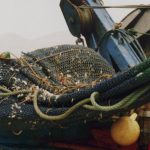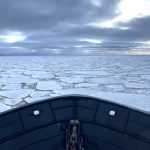The Alaska salmon fishery, which commercially harvests more than 160 million salmon a year, has been re-certified as meeting the Marine Stewardship Council’s environmental standard for sustainable fishing . Recertification means wild Alaska salmon can continue to use the MSC’s blue ecolabel on products around the world, which is good news for environmentally-aware shoppers who want to buy salmon from well managed sources. The salmon fishery was originally certified in 2000, when it was the first US fishery to achieve MSC certification .
The fishery has now completed a thorough science-based re-assessment by Scientific Certification Services (SCS), with independent experts reviewing technical information, management policies and stakeholder input, and verifying that Alaska’s commercial fisheries for Chinook, sockeye, coho, pink and chum salmon continue to be sustainable and well managed.
The recertification process analyzed 16 different units of the fishery, reflecting its complex nature, geographical spread and varied techniques and gear, such as drift gillnet, seine, troll and fishwheel. The fishery in 2006 was worth $276 million, landed 287,000 Metric tons and had 11,300 commercial permits. The fishery is sometimes described as a large volume fishery made up of many small boat operators, as Alaska state law limits the size of salmon fishing boats to 58 feet for a purse seine vessel and 32 feet for a gillnet boat. It was represented by the Alaska Department of Fish and Game for the assessment process [4].
Rupert Howes, Chief Executive of the MSC welcomed the news:
“I am absolutely delighted that the recertification process has concluded successfully. Having seen the fishery in operation this year from Bristol Bay up to Emmonak near the mouth of the Yukon River there is no doubt that this is a very special and iconic fishery. The MSC congratulates all of those involved in the assessment process and in particular ADF&G and the Alaskan salmon fishers for staying the course through some challenging times along the way. Lessons have been learnt from all recent re-certifications and the MSC is committed to implementing process improvements in 2008 to promote a more efficient and time bound process, meeting the same rigorous sustainability standard. Most importantly, the global demand for independently certified and labelled sustainable seafood is growing. Alaskan salmon is riding the crest of this wave with more labelled products than any other MSC certified species and recertification will undoubtedly open up yet more marketing opportunities for this unique fishery.”
From a commercial perspective the fishery has benefited from widespread use of the MSC label on salmon products throughout North America, Europe and Asia:
• Alaska salmon is the product most demanded by commercial buyers and the most versatile – currently there are 360 MSC-labelled salmon products available as smoked, fresh, frozen, canned, roe and ready-meal options.
• Alaska salmon is the most widely marketed fishery that is certified under the MSC programme – MSC-labelled salmon is available in 21 countries around the world.
• It has been a pioneer for sustainability as the first US fishery to take part in the MSC programme, and the fishery directly employing most people.
David Bedford, Deputy Commissioner for the Alaska Department of Fish and games commented: “Alaskans take pride in the successful management of our salmon resources to produce long-term sustained-yield, and it is good to have these accomplishments affirmed by the Marine Stewardship Council. The re-certification process has been long, and at times difficult, however we expect that Alaska’s wild and sustainable commercial salmon fisheries will benefit from this endorsement. We look forward to working with MSC to help improve the process and to enhance the reputation of Alaska salmon around the world.”








